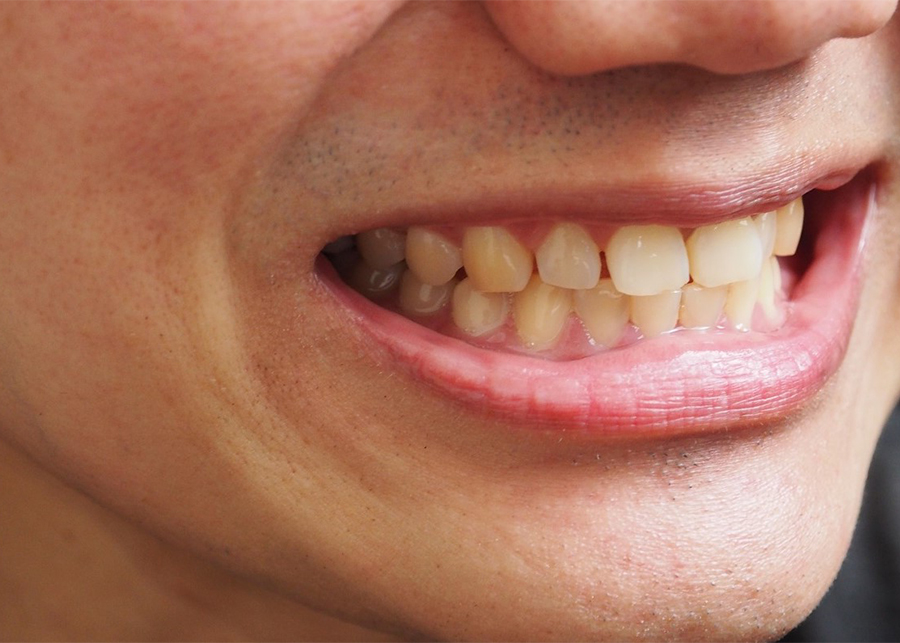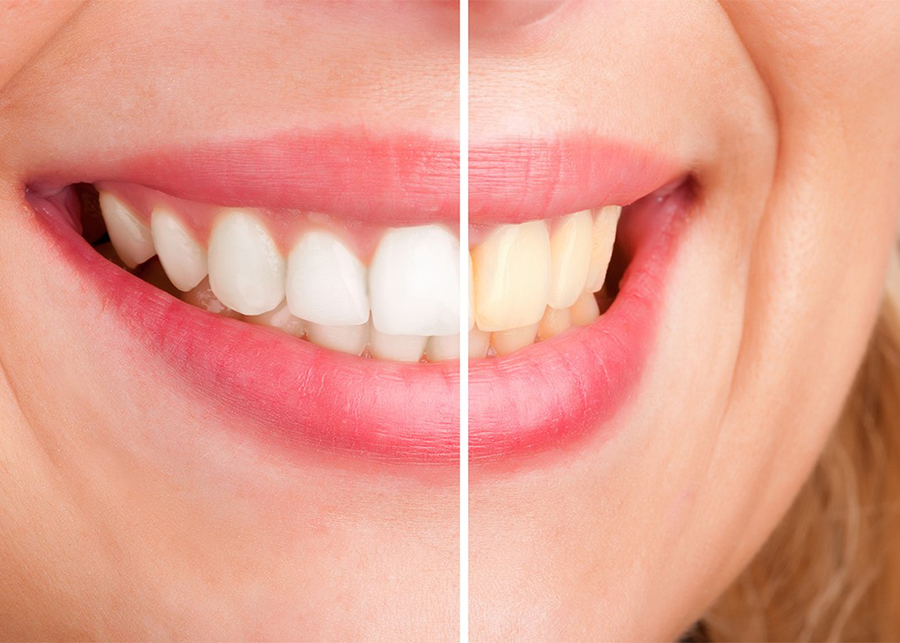
How can one of the greatest sources of happiness in your life become less attractive? The answer: stains on your teeth. It might seem impossible to eliminate those embarrassing stains, but there are many simple solutions that will have you smiling again in no time.
If you have ever wondered how to remove stains from teeth, you’ve come to the right place. While the answer may be obvious (baking soda and brushing regularly, of course), there are also many alternatives that will still provide you with a clean, fresh smile. If you can’t resist a tasty red wine, try switching to white instead. And if you don’t want to give up your favorite red wine, chewing gum or strong mints will do wonders for your dental health and your breath.
Having mints in your pocket or purse will prevent you from getting in situations where staining is a possibility.

Baking soda
For a natural way to remove stains from teeth, simply sprinkle a bit of baking soda on your teeth and then brush. Baking soda is a highly alkaline substance, and is a great way to remove surface stains without causing much abrasion. Many toothpastes contain baking soda as an ingredient to help eliminate plaque and freshen breath. But what is baking soda and how can it benefit your dental health?
Brushing regularly
Generally, the best way to prevent stains on teeth is to brush your teeth frequently. Ideally, you should brush your teeth at least twice a day, after you have eaten and drunk. You should use fluoride toothpaste to prevent tooth decay and strengthen your teeth. Floss your teeth regularly, as flossing removes plaque from the areas between your teeth and can prevent stains from appearing on the edges. Although brushing does not alter the color of your teeth, it can help you get rid of minor stains and make them look whiter.
Professional teeth whitening
A professional teeth whitening treatment involves a combination of water, air, and fine powder to lift surface stains and early calculus. The process can take from a few hours to a week, and the results can last one to three years. The procedure is done at a dentist’s office and involves the application of a powerful bleaching agent to the teeth. In some cases, ultraviolet light or heat is used to accelerate the whitening process.
Intrinsic stains occur in the dentin
Intrinsic stains on the teeth are the result of a variety of conditions. They occur deeper in the tooth than extrinsic stains and are caused by dark pigments in the crystal structure of the tooth. Excessive fluoride intake, antibiotics, trauma to the teeth, and hyperemia, or the delivery of healing cells to the area, can also cause intrinsic stains.
Tea stains
If you are a regular tea drinker, you are aware of the fact that the beverage can leave a stain on your teeth. While the process to remove the stains is relatively simple, removing hardened stains
from the teeth can be a tough challenge. In addition, removing stains that have set in the cracks of the backside of the teeth is next to impossible. Here are a few tips to help you deal with the problem.

Red wine stains
There are a few easy ways to get rid of the wine stains on your teeth. The first method involves using hydrogen peroxide as a mouthwash. Then, mix it with baking soda to make a paste. The hydrogen peroxide should be a concentration of 1.5% or 3%. Afterward, brush your teeth thoroughly to remove any remaining stain. Finally, if you are having difficulty removing the red wine stains from your teeth, you can always consult your dentist and get them to help you remove them.
Tetracycline stains
While the effects of tetracycline on the appearance of teeth have decreased greatly in recent years, some adults still exhibit tetracycline stains on their teeth. In some cases, the tetracycline staining is mild, limited to the incisal part of the crown, and in other cases, it is moderate and extends to the whole tooth surface. The stains can vary from a light yellow to deep brown to a grey or blue color, and may be intractable. However, the best treatment for this condition is a combination of oral care and professional intervention.
How to Remove Stains From Teeth Result
To conclude, tetracycline is one medication that can be used in the care of patients with abnormal or diseased teeth or as a medical procedure on healthy teeth. But it can also cause slight discoloration of the tooth enamel and thus lead to tooth stains. Although this side effect is currently much reduced, it can still happen, especially in patients whose teeth are more sensitized to staining. The best way to deal with it is to maintain good personal oral hygiene together with regular checkups at the dental clinic. A non-invasive procedure is likely to restore the teeth back to their normal coloration.
